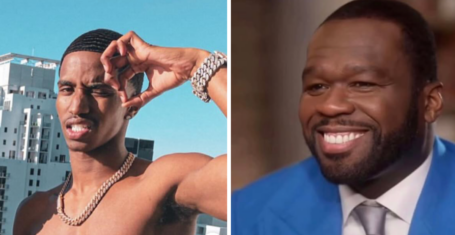
The shocking difference in Joel’s death between The Last of Us show and game
Tommy’s absence in the show changes so much
If you’ve played The Last of Us Part II, then you probably already know about the gut-wrenching, heart-stopping death of Joel. But if you’ve only been following the TV series, buckle up. HBO’s version of this iconic moment is not the same as what went down in the game. The Last of Us season two just dropped one of the most shocking moments in TV history. Whether you knew it was coming (thanks, game spoilers) or you were blindsided, the way the show handled this scene is something admirers of the video game will never forget. In fact, it’s safe to say they changed it, and I’m here to break down why.
So, how does Joel die in the game?

via Sony
Let’s rewind to the video game’s version of Joel’s death in The Last of Us Part II. The scene is chillingly raw, and it starts with Joel getting ambushed by Abby’s group. Abby, who’s out for revenge after Joel killed her father in season one’s finale, brutally takes her moment.
In the game, Joel’s death is cold and unforgiving. He’s shot in the leg by Abby and then beaten senseless with a golf club while helpless. The most jarring part? You’re right there, as Ellie, the one who’s been by Joel’s side through thick and thin, watches his life slip away.
It’s gut-wrenching. It’s personal. And it’s honestly one of the most shocking deaths in video game history.
But how did he die in the show then?

via HBO
Most Read
Now, let’s talk about how the HBO adaptation flipped this moment on its head. While the core of the scene remains the same, Abby ambushes Joel, shoots him, and proceeds with a golf club, the details are where things take a darker turn (and we’re not just talking about the blood).
In the show, Joel’s execution is less of a simple beatdown and more of a shocking, almost clinical stab to the head with the broken golf club. That’s a huge shift, as the game never went that far.
The Last of Us TV show upped the intensity with Abby directly stabbing Joel in the head, an act that was only hinted at in the game. It’s more personal in the show, more violent, and honestly, harder to watch.
Abby’s character depth in the show makes her more relatable

via HBO
Another big difference is the way Abby is portrayed in the show. When Abby first confronts Joel in both the game and the series, she’s a villain — straight up. But the show goes deeper into her character, giving her new lines that justify her actions and even give us a little glimpse into her moral code. This makes her more sympathetic and less of a one-note antagonist.
Now, this shift definitely changes the way we perceive her, especially as she kills Joel. In the game, her revenge feels more raw and less justified, but in the show, there’s a subtle hint that Abby is doing this as part of a larger, personal journey. This new layer to Abby’s character adds a lot of emotional complexity to the scene.
Tommy’s absence and its impact

via Sony
Here’s one of the biggest shifts: Tommy isn’t there to witness Joel’s death, which completely changes the context for him. In the game, Tommy and Joel have a close bond, and there’s an important moment early on where Joel confesses to Tommy that he doomed the potential cure for humanity by saving Ellie. This moment of guilt is something we never get in the show. Without this confession, Tommy doesn’t fully understand Abby’s motivations for revenge, and to him, she just appears as a cold-blooded killer.
Since Tommy isn’t there during the torture and murder, his perception of Abby is forever skewed. Meanwhile, in the game, Tommy’s presence adds that familial layer of pain and loss, making Joel’s death feel even more tragic.
For more like this plus all the latest news, drops, quizzes and memes, like The Tab on Facebook.
Featured image via HBO






















